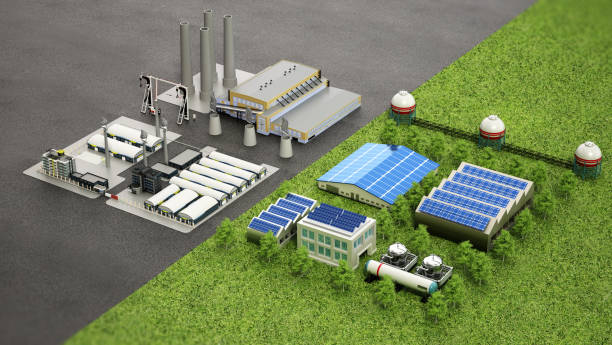Future-Proofing Energy and Infrastructure

Q1. Could you start by giving us a brief overview of your professional background, particularly focusing on your expertise in the industry?
I’ve spent the last 15 years working at the intersection of renewable energy, utilities, and power infrastructure. My journey has taken me across India, the Middle East, and Australia, working with companies such as Vestas, CleanMax, Fourth Partner Energy, L&T, Saudi Electricity Company, and Australian Gas Limited.
I’ve led large-scale solar and hybrid project deployments, advised on energy transition strategy, and driven asset performance through digital tools. Increasingly, my focus is on integrating technology into clean energy solutions—using data, automation, and analytics to make projects smarter, more bankable, and scalable.
Q2. Which emerging markets offer the highest upside for early renewable infrastructure deployment or sustainability-as-a-service models?
Saudi Arabia is an emerging powerhouse. With Vision 2030 as the backdrop, the country is moving fast to decarbonize industrial zones and power its giga-projects—creating strong demand for solar, BESS, and integrated energy services.
India remains a key player, especially in distributed solar and hybrid models for C&I customers. Southeast Asia is quickly gaining traction, too, with Vietnam and the Philippines introducing supportive frameworks.
That said, Africa, particularly Kenya and Nigeria, holds huge potential for decentralized models. Meanwhile, European regulations, such as CBAM, are indirectly accelerating clean energy adoption in emerging markets by reshaping trade and investment flows.
Q3. How is the energy transition investment landscape evolving, and what are the implications for emerging markets?
We’re witnessing a shift from funding individual solar or wind assets to investing in integrated energy platforms—bundling generation, storage, and digital layers. Investors today want visibility, scalability, and tech-enabled resilience.
For emerging markets, this means an opportunity to leapfrog legacy systems, especially as blended finance and development capital come into play.
In Saudi Arabia and India, policy frameworks are already evolving to support hybrid and storage-integrated models. European markets have influenced this trend by proving the viability of digital-first, vertically integrated energy platforms.
Q4. Which solar infrastructure developers and operators are gaining strategic advantage by aligning with data-intensive industries (e.g., AI, semiconductors)?
Players like Brookfield, NextEra, Fourth partner and CleanMax are positioning themselves strategically by serving data centers, hyperscalers, and semiconductor manufacturers. These industries need uninterrupted, high-quality power and are willing to pay a premium for clean, resilient supply.
In the U.S. and Europe, we see direct PPAs tied to these assets. Meanwhile, in Saudi Arabia, energy developers are aligning with mega-projects like NEOM, where AI and digital demand are central. The real differentiator is offering clean energy bundled with BESS, grid support, and digital assurance—ensuring energy continuity, performance monitoring, and ESG compliance.
Q5. How are heavy industries (steel, cement, refining) integrating low-carbon solutions into their decarbonization roadmaps, and what is the investment outlook?
Industries are adopting a layered approach: shifting to green hydrogen, electrifying thermal processes, investing in waste heat recovery, and piloting carbon capture.
Europe has led the charge with projects like green steel in Sweden and hydrogen blending in Germany. These examples are shaping strategies in India and Saudi Arabia, where similar programs are now being rolled out, often backed by export-related ESG compliance needs.
From an investor perspective, these sectors are shifting from pilot mode to serious retrofit capital cycles, especially when combined with digital twins and real-time emissions tracking.
Q6. What advancements in energy storage technologies are enhancing the integration of renewable energy into the grid?
Battery Energy Storage Systems (BESS) are transforming grid dynamics—especially in regions like Saudi Arabia, where reliability and flexibility are critical.
While lithium-ion still leads the way, flow batteries, and thermal storage are seeing increased R&D and pilot deployment. Digitalization plays a huge role here.
Modern storage systems now come embedded with real-time analytics, cloud controls, and AI-based optimization, enabling them to participate in demand response, frequency regulation, and arbitrage markets.
European regulators are ahead in recognizing storage as a standalone asset class—something India and the Gulf states are starting to replicate.
Q7. If you were an investor looking at companies within the space, what critical question would you pose to their senior management?
I’d ask: “How future proof is your portfolio in a world where energy is no longer just about generation, but about intelligence, integration, and resilience?”
Today, clean energy alone isn’t enough. The winners will be companies that combine energy generation with digital infrastructure, policy foresight, and adaptive business models.
I’d want to understand how leadership is leveraging data, partnerships, and modular scalability to stay ahead of policy shifts, tech disruption, and evolving off-taker demands—especially in volatile or high-growth markets.
Comments
No comments yet. Be the first to comment!
